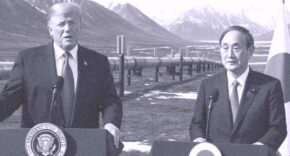For decades, the US dollar has reigned supreme as the world’s dominant currency, used in nearly 90% of global foreign exchange transactions. But in 2025, something surprising is happening: the dollar is struggling, marking its worst first half of a year since 1973 with a 10.7% drop. Why is the “greenback” losing its shine? From trade wars to political interference, a mix of factors is shaking confidence in the dollar, and the ripple effects could change the global financial landscape.
A Perfect Storm of Policies and Uncertainty
The dollar’s decline is tied to a series of bold moves by President Donald Trump. His aggressive trade policies, including widespread tariffs, have sparked uncertainty among businesses and investors worldwide. These tariffs are hitting US economic growth, making the dollar less appealing. Harvard economist Kenneth Rogoff, a former chief economist at the International Monetary Fund, told NPR, “There’s no question that Donald Trump is a catalyst, and it may go much further with what he’s doing.” The tariffs are not only raising costs for imports but also making investors question the stability of the US economy.
Adding fuel to the fire is Trump’s massive spending and tax bill, dubbed the “Big Beautiful Act,” signed into law on July 4, 2025. This bill is set to add trillions to the already ballooning US debt, which is nearing record highs compared to the country’s income. Rogoff warns that this “slow-motion train wreck” of rising debt is causing foreign investors to rethink their reliance on the dollar. When investors sell off American stocks and bonds, they often convert dollars back to their home currencies, pushing the dollar’s value down further.
Challenging the Federal Reserve’s Independence
Another major factor is Trump’s public attacks on the US Federal Reserve and its chairman, Jerome Powell. Unlike in countries like Australia, where the central bank’s independence is fiercely protected, Trump has openly tried to influence the Fed. He’s called Powell names like “a total and complete moron” and even sent a handwritten note demanding interest rates drop to 1% or lower, compared to the current rate above 4%. Powell admitted that without the tariffs, he might have already cut rates, which would make borrowing cheaper for the government and consumers.
Trump’s threats to fire Powell or replace him before his term ends in 2026 are raising alarms. Greg Valliere, a chief US policy strategist at AGF Investments, called this a “terrible idea” that could “annoy and confuse financial markets.” Francesco Pesole, a foreign exchange strategist at ING, emphasized that an independent central bank is a cornerstone of the dollar’s strength. If investors think politics is swaying the Fed’s decisions, they’re less likely to trust the dollar, which could lead to further declines.
A Shifting Global Landscape
The dollar’s dominance isn’t just being challenged by US policies. Over the past two decades, the share of US dollars in global foreign exchange reserves has dropped from about 70% to just under 60%. In a more divided world, countries like China, Russia, and India are pushing for alternatives, even exploring a new digital currency called “The Unit.” While these efforts face hurdles, they signal a growing desire to move away from the dollar as the world’s go-to currency.
At the same time, other currencies are gaining ground. The Australian dollar, for example, is on the rise, potentially reaching just under 70 US cents by mid-2026, according to AMP forecasts. But this isn’t because of anything special about the Australian dollar—it’s largely due to the US dollar’s weakness. Global stock markets, like Germany’s DAX and Hong Kong’s Hang Seng, are outperforming the US S&P 500, with gains of nearly 20% compared to the S&P’s 6% this year. This shift shows investors are looking beyond the US for opportunities.
Is the Dollar’s Decline a Big Deal?
Some argue the dollar’s drop is just a temporary correction. After years of being overvalued, the dollar may simply be settling closer to its “fair value,” as AMP’s deputy chief economist Diana Mousina suggests. Plus, there’s no clear rival to replace it. The dollar is still the most widely used currency for governments, companies, and even illegal trade. The US also has the world’s largest and most diverse financial markets, making it hard for currencies like the euro or yuan to take over.
A weaker dollar has upsides too. It makes US exports, like those from tech giants like Apple or service industries like finance and consulting, more competitive abroad. It could also boost domestic manufacturing by making foreign goods pricier, especially with tariffs in play. However, it’s not all good news. Americans traveling abroad will find their dollars don’t go as far, and imported goods will become more expensive, potentially fueling inflation.
What’s Next for the Dollar?
The big question is whether this is a short-term dip or the start of a long-term decline. Rogoff warns that we might be at an “inflection point” in the global economy, not seen since the 1970s when President Nixon ended the dollar’s link to gold. If the dollar loses its status as the world’s safe-haven currency, it could have far-reaching effects. For countries like Australia, a less volatile Australian dollar might not act as a buffer during global crises, putting more pressure on the Reserve Bank of Australia to support the economy.
For now, the dollar’s slide is a wake-up call. It’s a reminder that even the world’s financial giant isn’t immune to uncertainty. As Trump’s policies continue to shake things up, investors and policymakers alike are watching closely to see if the US dollar can reclaim its crown—or if its reign is starting to fade.











